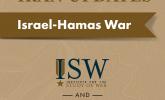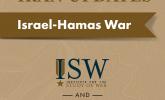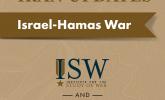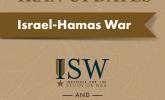Russian Offensive Campaign Assessment, December 23, 2023
December 23, 2023 - ISW Press
The New York Times (NYT) - citing former and current senior Russian, US, and international officials - reported that Russian President Vladimir Putin is using back channels and intermediaries to signal his interest in a ceasefire, despite Putin’s recent public statements to the contrary. NYT reported that Western officials have been picking up renewed signals through backchannels since September 2023 that Putin is interested in a ceasefire that freezes the current frontlines, but noted that Western officials warned the backchannels could be “Kremlin misdirection” and may not reflect a “genuine willingness” to negotiate. NYT suggested several possible motivations Putin may have for his reported interest in a ceasefire: the upcoming March 2024 Russian presidential election, a desire to “keep his options open” regarding the war’s resolution and take advantage of perceived waning Western support for Ukraine, and the “distraction” of the Israel-Hamas war. All these motivations reflect temporary reasons why Putin might pursue a temporary ceasefire that would benefit Russia by allowing Russia the time to prepare for renewed aggression against Ukraine, as ISW has routinely assessed. The NYT noted that Putin’s public rhetoric, which has recently reasserted Russia’s maximalist objectives that are tantamount to full Ukrainian and Western surrender, is at odds with Putin’s reported private desire to “declare victory and move on.” Neither the NYT nor its sources offered any reason to believe Putin’s backchannel communications would be more reflective of his goals than his public speeches addressing domestic, Ukrainian, and international audiences. The NYT report also failed to make clear whether Putin’s alleged interest in a ceasefire is for a temporary pause or a permanent end to the war.










